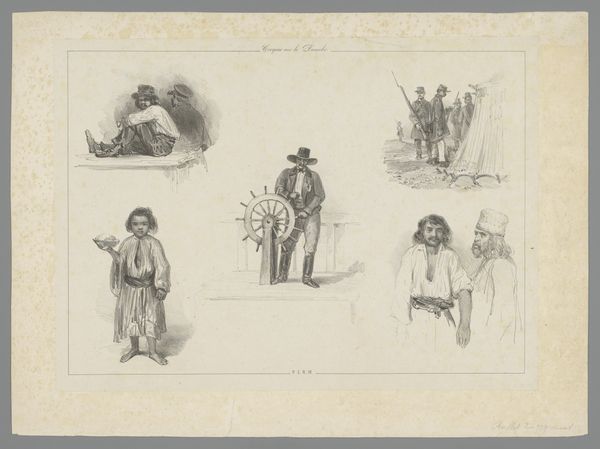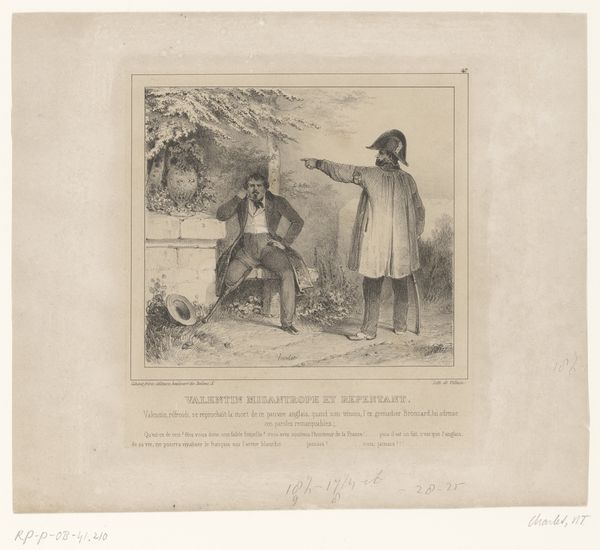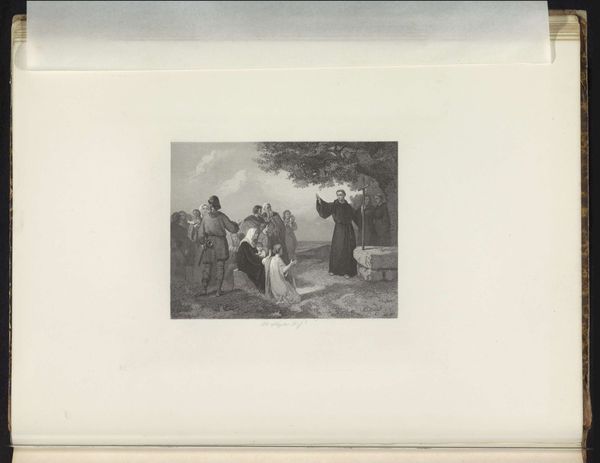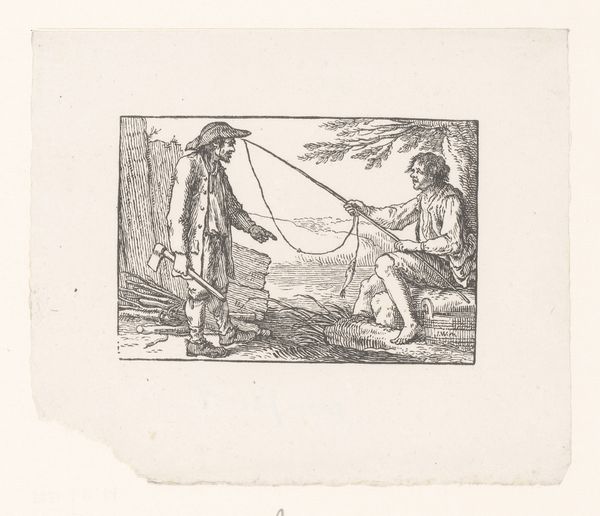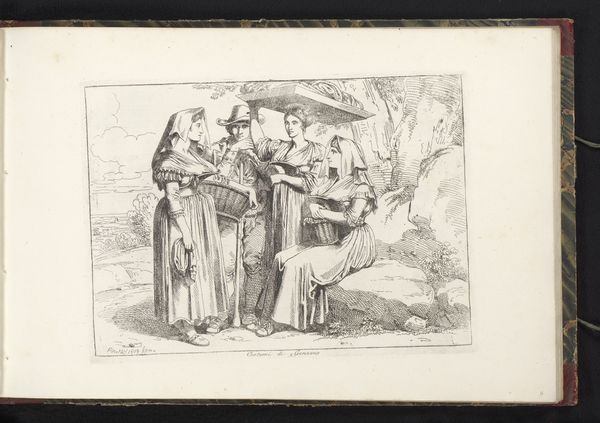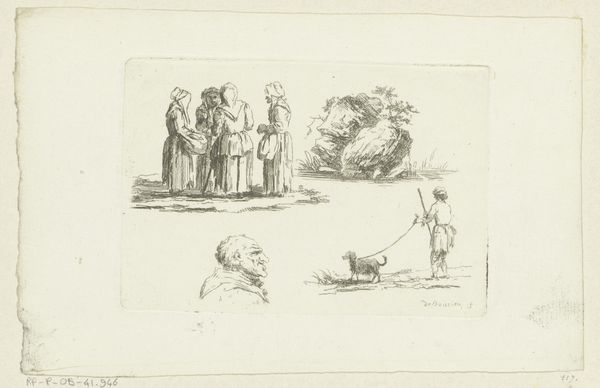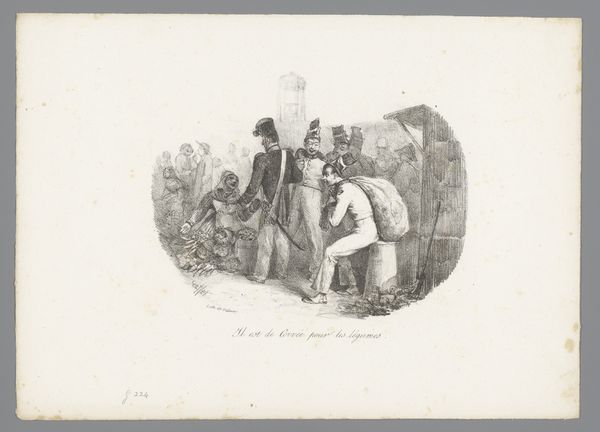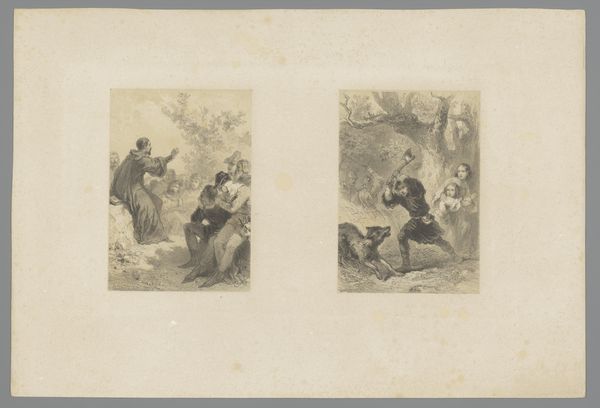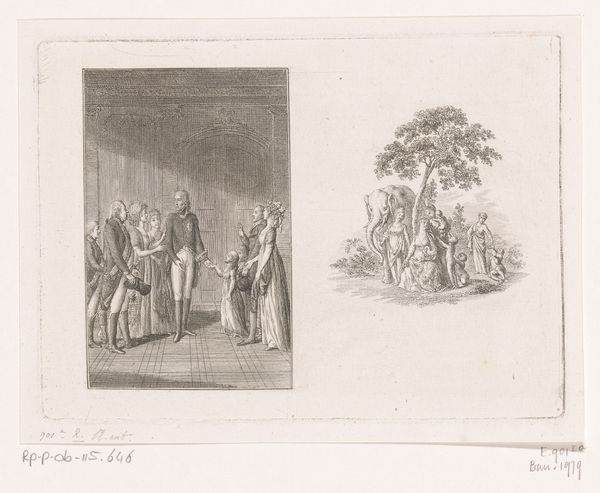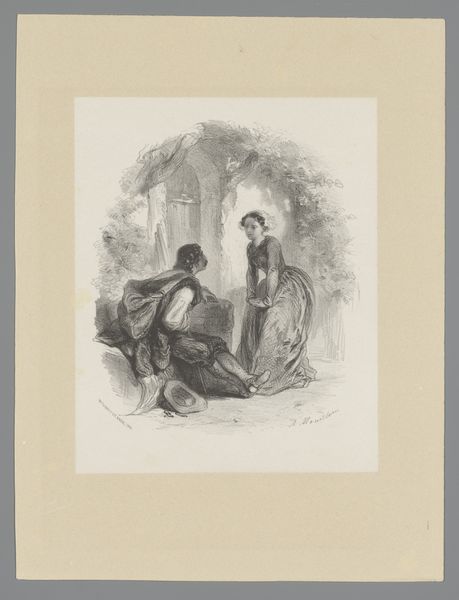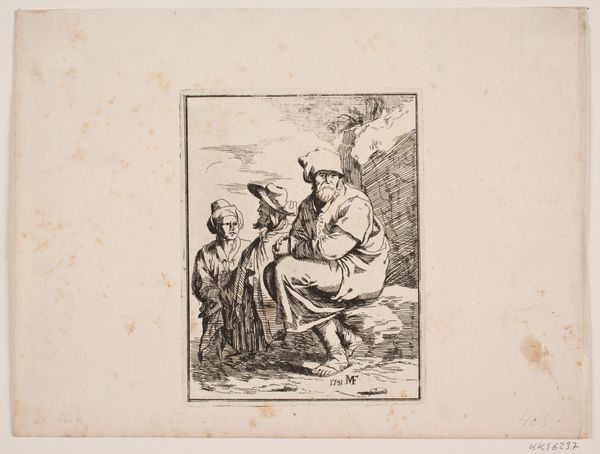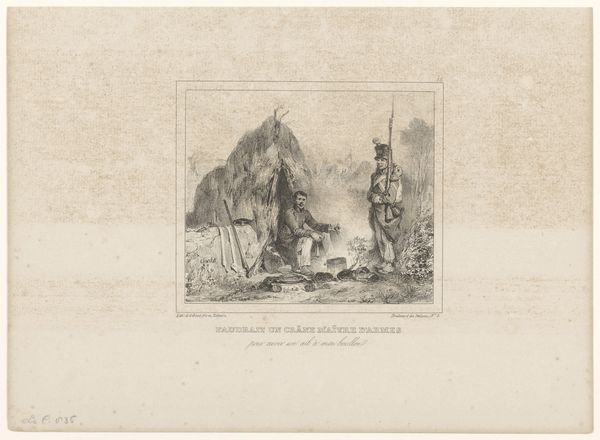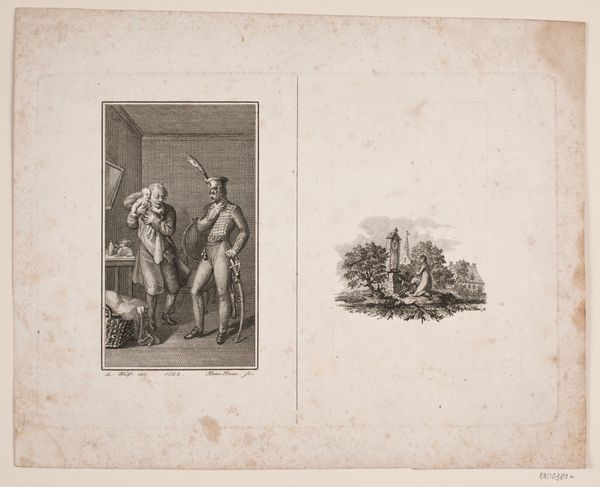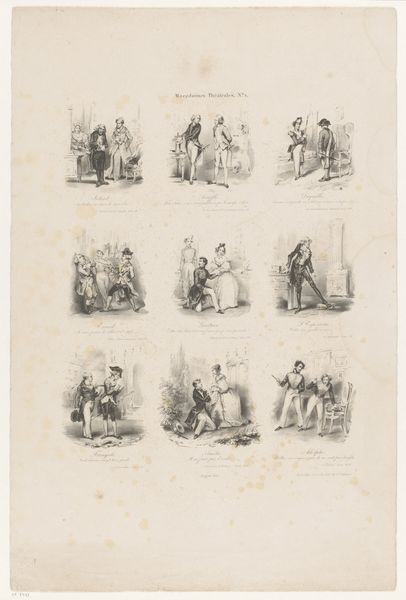
En havemand og Kristus, der åbenbarer sig for kvinderne ved graven 1834
0:00
0:00
drawing, lithograph, print, pencil
#
pencil drawn
#
drawing
#
narrative-art
#
lithograph
# print
#
charcoal drawing
#
figuration
#
pencil drawing
#
romanticism
#
pencil
#
history-painting
Dimensions: 295 mm (height) x 396 mm (width) (bladmaal)
Editor: Here we have Lucie Marie Ingemann’s “En havemand og Kristus, der åbenbarer sig for kvinderne ved graven”, a lithograph from 1834. It’s a somewhat simple image, really, rendered in pencil. There's something very delicate and… human about the whole thing. What strikes you most about it? Curator: I find myself drawn to Ingemann's deliberate choices regarding the materials. A lithograph allows for reproduction and dissemination. Consider the societal context: who was the intended audience for this print, and what message was Ingemann, a woman artist, attempting to convey through its reproduction? Editor: That’s fascinating, the idea of wider accessibility. I hadn’t considered the reproduction aspect. But what about the pairing of these scenes? One appears quite mundane, and the other intensely spiritual. Curator: Precisely! The juxtaposition underscores the intersection of the earthly and the divine within daily existence. Ingemann uses inexpensive material – pencil, lithography - to elevate an important religious scene. What commentary might Ingemann be offering about labor and faith by showing an image of manual labour so near Christ? Editor: Perhaps the divine can manifest in the ordinary. It sort of democratizes the spiritual experience. Curator: Exactly. This subversion of high and low through material choice and subject matter…it’s very insightful of Ingemann. And that leads us to reconsidering this "simple" image, doesn’t it? Editor: It absolutely does! It shows the image is far more intricate and purposeful than I first thought. Curator: It shows how the method of making an artwork provides meaning too, and how understanding those artistic methods changes the way we interpret an image.
Comments
No comments
Be the first to comment and join the conversation on the ultimate creative platform.
